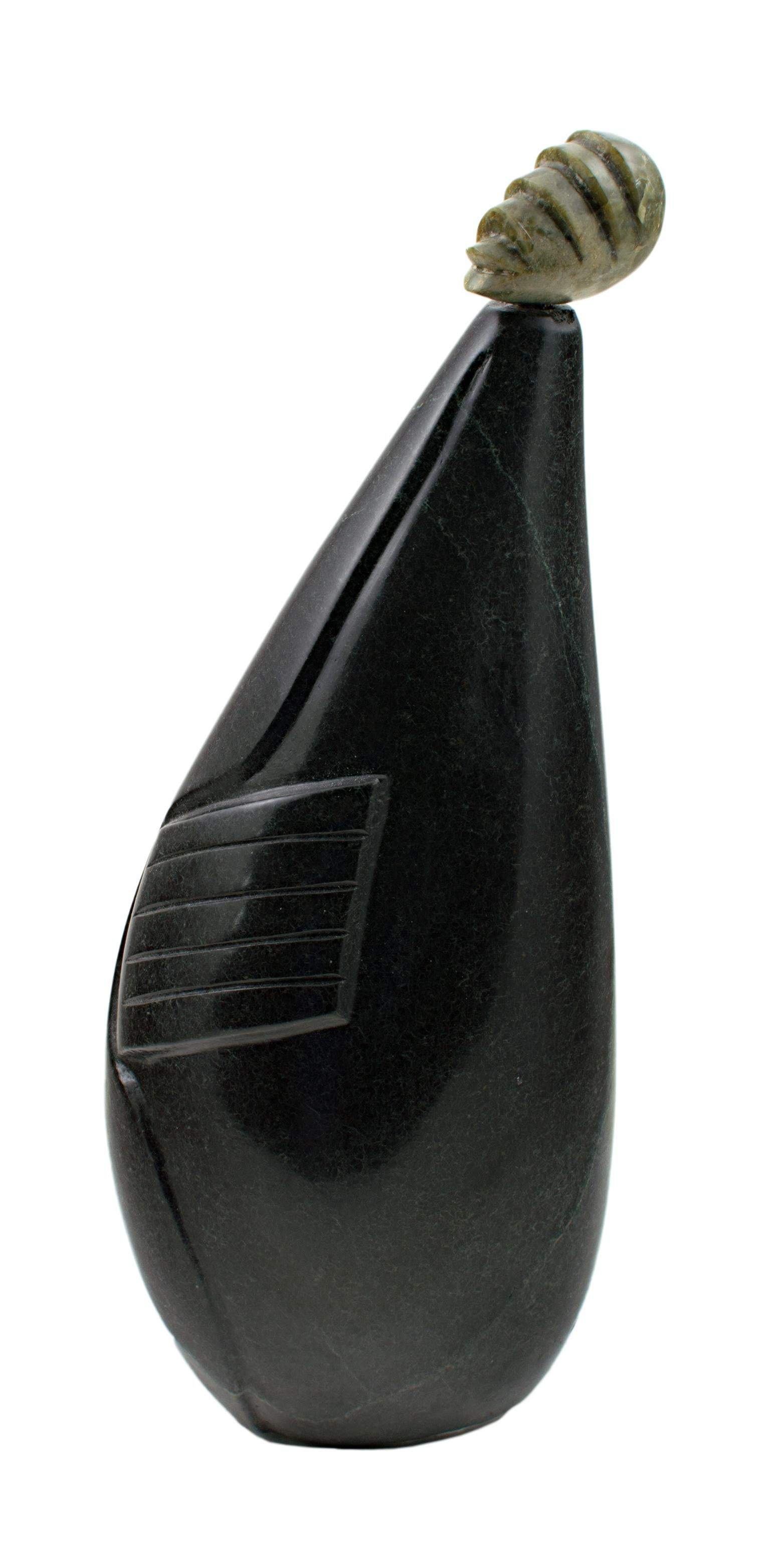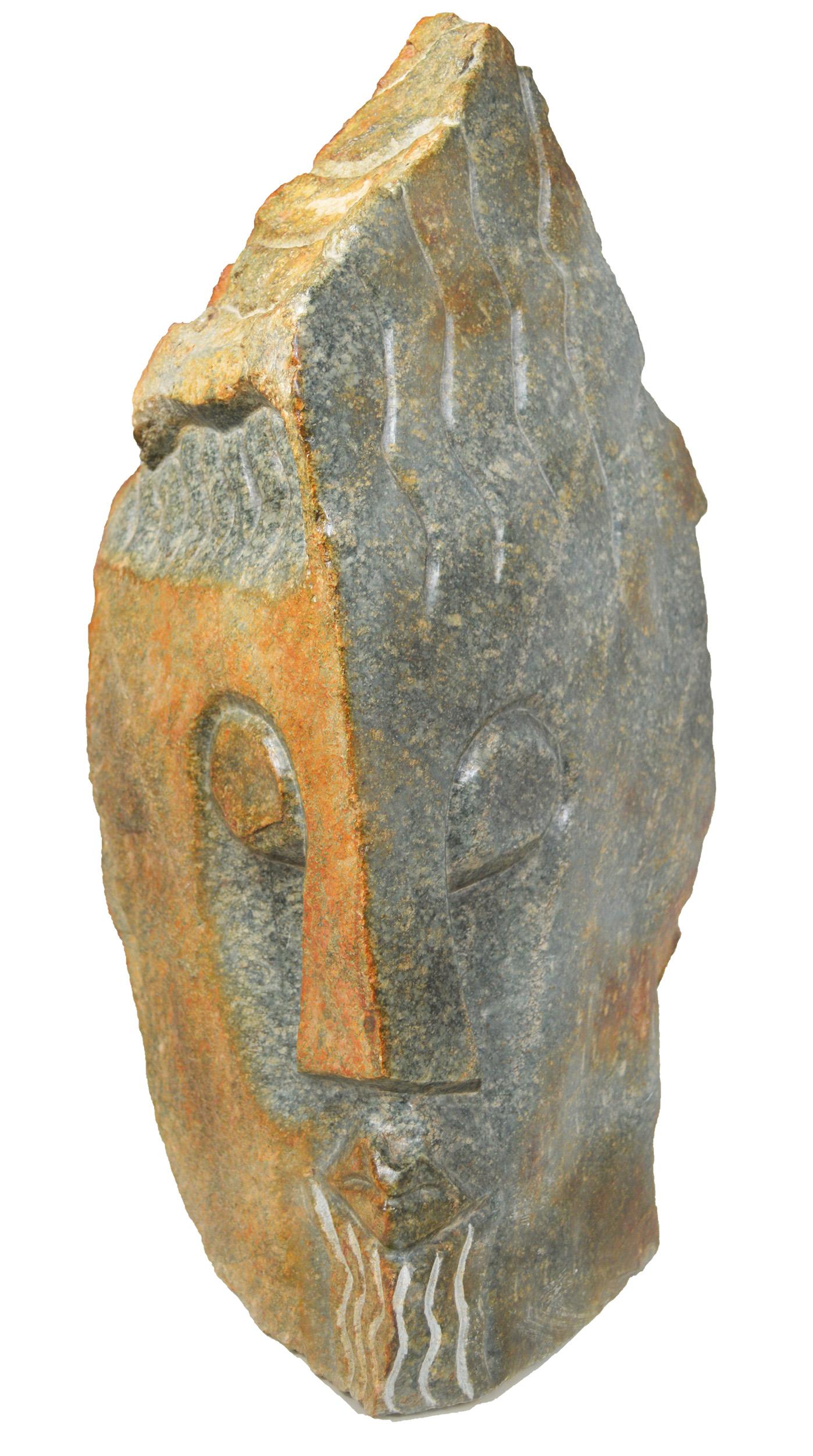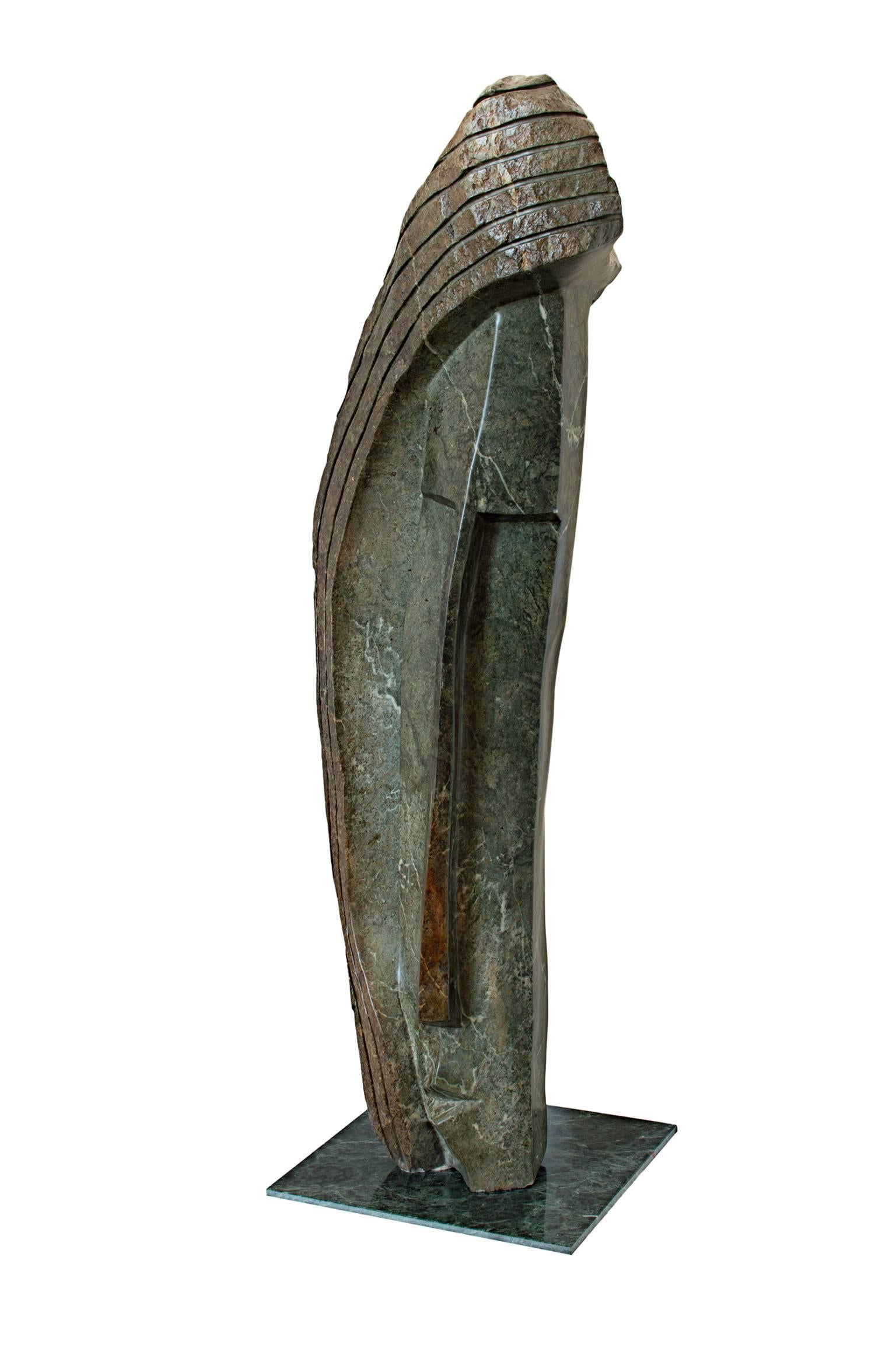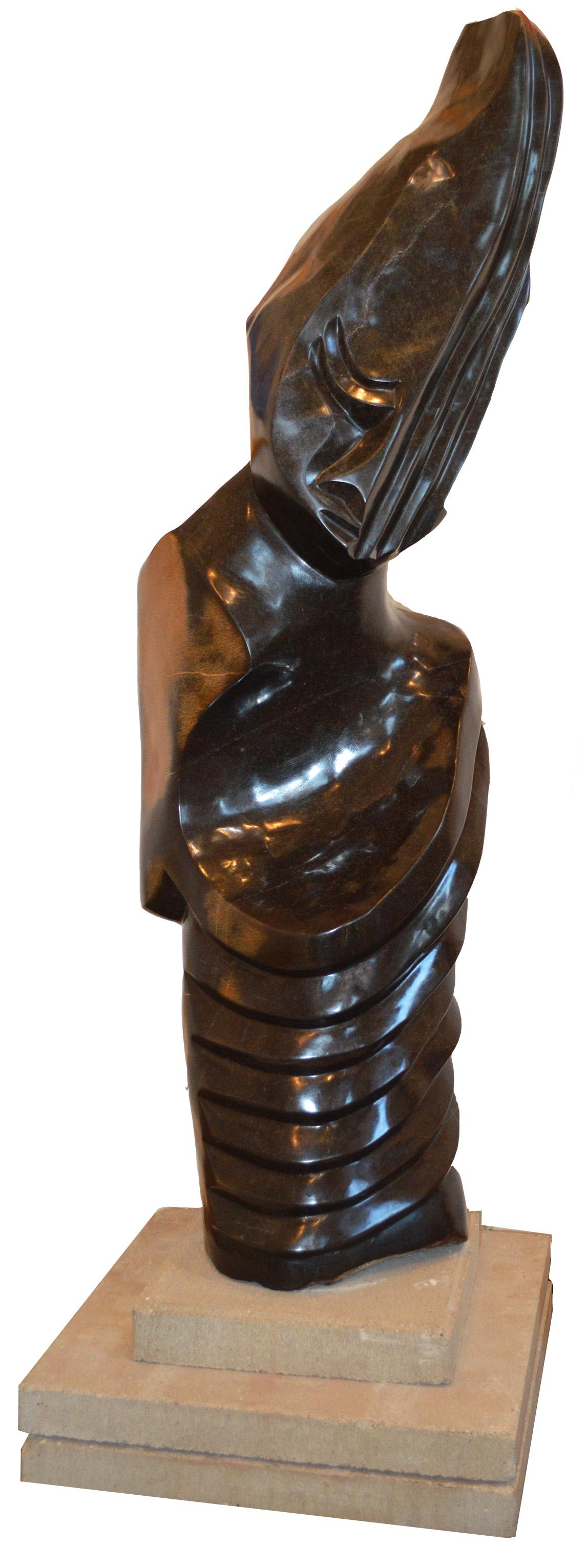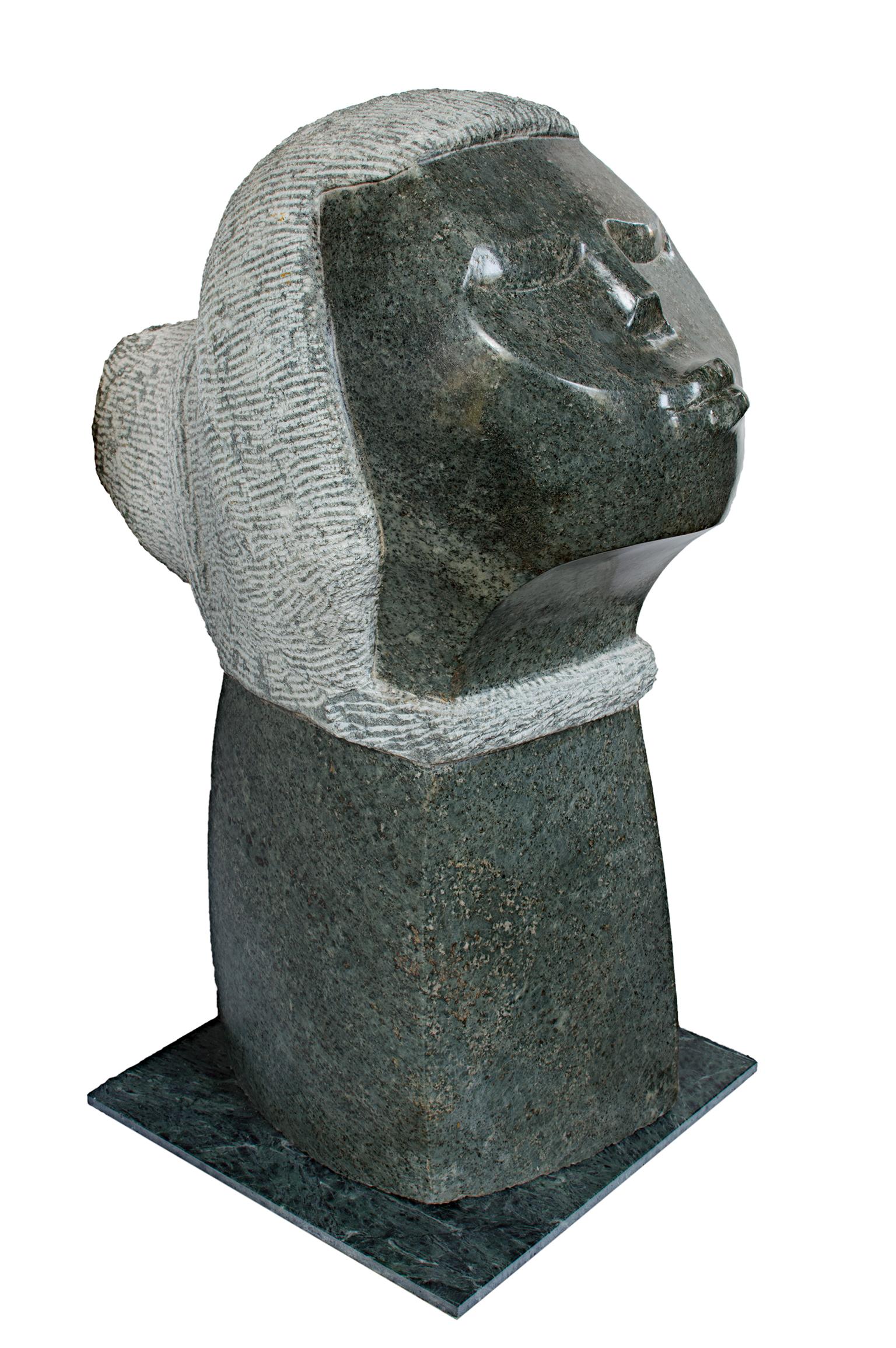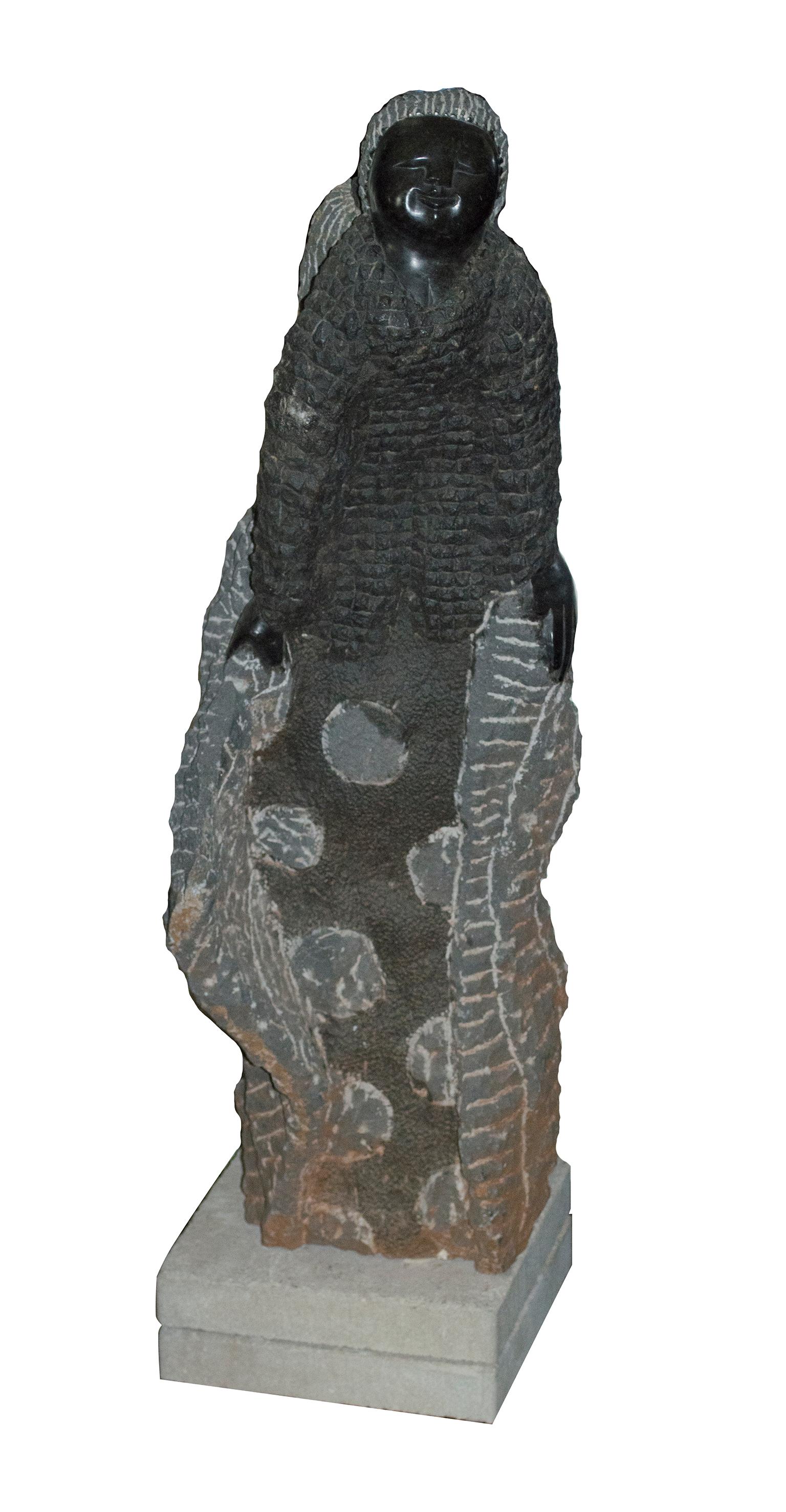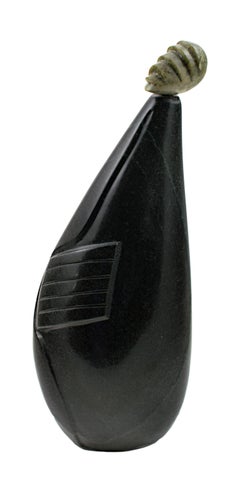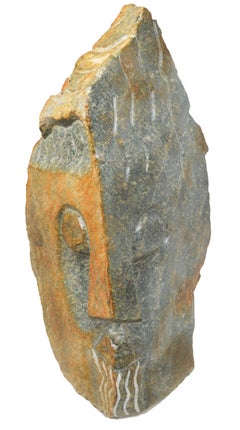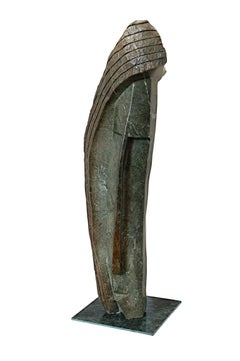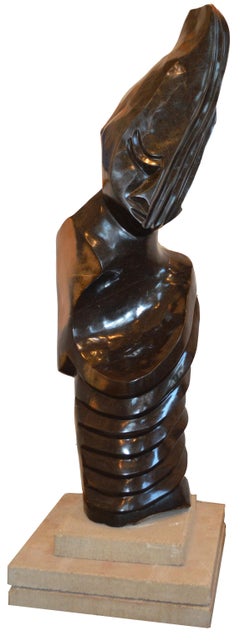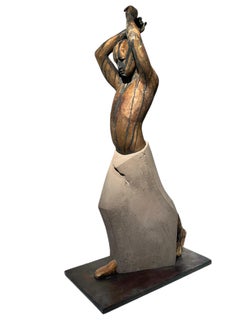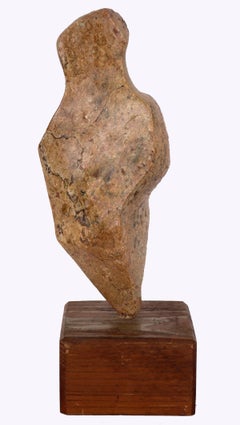Items Similar to "New Hair Style, " a Springstone Sculpture by Edgar Sahondo
Want more images or videos?
Request additional images or videos from the seller
1 of 8
Edgar Sahondo"New Hair Style, " a Springstone Sculpture by Edgar Sahondo2002
2002
$2,430
£1,841.25
€2,109.01
CA$3,441.82
A$3,755.83
CHF 1,969.99
MX$45,615.75
NOK 24,606.30
SEK 23,254.19
DKK 15,740.83
About the Item
"New Hair Style" is an original springstone sculpture by Shona artist Edgar Sahondo. It depicts a female head with an elongated neck and stylized hair and features.
21" x 10" x 9" sculpture
Born in Guruve, Zimbabwe on August 13th, 1968, Edgar Sahondo attended Chakaodza Primary School and later his secondary education at St. Francis Mission School. During his high school years, Edgar was inspired to take up stone carving by Bernard Matemera, an accomplished artist. After graduating, he was invited to join the Tengenege Sculpture Community where he worked for two years before coming to Harare in 1990. To make ends meet, he took a job at the Kentucky Airport Hotel from 1990 to 1993 but eventually his love of art won out and he turned to sculpting full-time.
By 1996, Edgar held his first exhibition at Sandros Gallery in Harare and continued on to participate in a number of National Gallery annual exhibitions. In 1998, he held a one man exhibition in Cape Town, South Africa and on July, 15th 2001, he was featured in the Daily Mail with Heather Fynn, a well known art promoter, showing off a piece called “Protecting the Future.”
Artists in Zimbabwe feel the economic hardships of the country. Edgar’s work often reflects his own self realizations about what he goes through during the hard times. "To be able to look at one’s self and see what needs to change, is the best asset a man could have.” He has said of his work, it helps him to remember that he can not change what he does not realize.
Edgar is a talented and accomplished artist. His work can be found in galleries and private collections around the world.
Shona artists and crafts people have been working in different media for generations. These include paintings, pottery, basket ware, wood carvings, and sculpture done in metal as well as the stone carvings. While there is not a long standing tradition of sculpture in what is now Zimbabwe (formerly Southern Rhodesia), stone carvings dating from the 15th century were seen in Great Zimbabwe, an excavated temple near Bulawayo. Most of the artifacts from this location have been moved to museums in Cape Town, South Africa or London.
It is generally agreed that Zimbabwean stone sculpture as seen today began during the late colonial period of the 1950's and 1960's. During this period the artists and artisans depicted many of the traditional Shona and other tribal spiritual myths.
Out of all the nations in Africa, the large varieties and abundant supplies of rock formations present throughout the Zimbabwe landscape provide artists with a medium for sculpture and carvings unique to their country. The Shona art sculpture of Zimbabwe combines the wonderful varieties presented by the stone with images drawn both from reality and abstract symbolism.
Much of the stone used by Shona artists is quarried in areas which are adjacent or quite near the villages where the work is created. Often the land on which the stone is found is owned by the village or the local artists. The artists use stone such as Serpentine (somewhat old, having been formed about 2.6 billion years ago), with more than 200 color variations. The hardest and darkest of the Serpentine varieties is black, commonly known as Springstone or Africa stone.
The wonderful natural character of stone is used both in its rough cut and textured state, or heated and burnished to a high gloss to reveal rich greens, browns, blacks and grays. The hardness, shape, density and quantity used of serpentine, verdite, sandstone, granite, steatite and other stones define the ultimate presentation of completed Shona art sculptures and carvings.
About the Seller
4.9
Platinum Seller
Premium sellers with a 4.7+ rating and 24-hour response times
Established in 1966
1stDibs seller since 2017
447 sales on 1stDibs
Typical response time: 3 hours
- ShippingRetrieving quote...Shipping from: Milwaukee, WI
- Return Policy
Authenticity Guarantee
In the unlikely event there’s an issue with an item’s authenticity, contact us within 1 year for a full refund. DetailsMoney-Back Guarantee
If your item is not as described, is damaged in transit, or does not arrive, contact us within 7 days for a full refund. Details24-Hour Cancellation
You have a 24-hour grace period in which to reconsider your purchase, with no questions asked.Vetted Professional Sellers
Our world-class sellers must adhere to strict standards for service and quality, maintaining the integrity of our listings.Price-Match Guarantee
If you find that a seller listed the same item for a lower price elsewhere, we’ll match it.Trusted Global Delivery
Our best-in-class carrier network provides specialized shipping options worldwide, including custom delivery.More From This Seller
View All"Monumental, " Springstone Sculpture signed by Shona artist Phineas Masaya
By Phineas Masaya
Located in Milwaukee, WI
"Monumental" is an original springstone sculpture by Shona sculptor Phineas Masaya. The artist signed the piece. This artwork features an abstracted figure.
10 1/2" x 4" x 4" art
Shona artists and crafts people have been working in different media for generations. These include paintings, pottery, basket ware, wood carvings, and sculpture done in metal as well as the stone carvings. While there is not a long standing tradition of sculpture in what is now Zimbabwe (formerly Southern Rhodesia), stone carvings dating from the 15th century were seen in Great Zimbabwe, an excavated temple near Bulawayo. Most of the artifacts from this location have been moved to museums in Cape Town, South Africa or London.
It is generally agreed that Zimbabwean stone sculpture as seen today began during the late colonial period of the 1950's and 1960's. During this period the artists and artisans depicted many of the traditional Shona and other tribal spiritual myths.
Out of all the nations in Africa, the large varieties and abundant supplies of rock formations present throughout the Zimbabwe landscape...
Category
Early 2000s Contemporary Figurative Sculptures
Materials
Stone
'Notorious Leader' original stone sculpture by Shona artist Nigel James
Located in Milwaukee, WI
'Notorious Leader' is an original opal serpentine sculpture by Zimbabwean artist Nigel James. The sculpture, a mask-like face of a man, takes joy and pride in the texture of the ston...
Category
Early 2000s Contemporary Figurative Sculptures
Materials
Stone
"I Am Beautiful, " Original Opal Stone Sculpture signed by Savheri Chirwa
By Savheri Chirwa
Located in Milwaukee, WI
"I Am Beautiful" is an original opal stone sculpture by Savheri Chirwa, a contemporary Shona sculptor. This sculpture features an elongated face with textu...
Category
Early 2000s Folk Art Figurative Sculptures
Materials
Stone
'Listening Friend' springstone Shona sculpture signed by Chemedu Jemali
By Chemedu Jemali
Located in Milwaukee, WI
'Listening Friend' is an original springstone sculpture signed by the Zimbabwean artist Chemedu Jemali. The sculpture presents the head and torso of a figure, highly abstracted in Jemali's signature style: The figure's head leans to one side, eyes closed, as if carefully listening to the viewer. Like rippling sound waves, ridges cover half the figures face and body, each undulating and glistening with a polished surface. As the viewer walks around the sculpture, they can see that Jemali has left parts of the figure as natural stone, allowing the rough-hewn texture to create an exquisite contrast of surface with the mesmerizing polish.
46 x 13 x 10.5 inches
Signed "Chemedu Jemali" along base, proper right
Chemedu Jemali was born on March 3, 1971 in Harare, where he did his primary education. He and his family then moved to the Shamva township where he completed high school. His family is originally from Malawi and their totem is of the Miranzi (mouse).
Chemedu's work focuses on stylized and abstracted figuration, ranging from spirit birds to stylized busts. Chemedu took an interest in carving in the early 1990s, inspired by the success of his older brother, Chituwa, and became an established carver. Initially, he worked as an apprentice to Chituwa who introduced him to carving the local hard stone such as verdite, springstone, cobalt and lemon opal. He has three brothers and one sister; his brother, Salim, is also a full time sculptor.
He has become a well known artist not only in the Shona Art...
Category
Early 2000s Contemporary Figurative Sculptures
Materials
Stone
"Calling Head, " Opal Stone Sculpture signed by Shona artist Gift Muchenje
By Gift Muchenje
Located in Milwaukee, WI
"Calling Head" is an original opal stone sculpture by Gift Muchenje. The artist signed the piece and it weighs 155 lbs. This artwork features a woman with ...
Category
Early 2000s Contemporary Figurative Sculptures
Materials
Stone
Africa Female Artist Stone Sculpture Figure Celebrate Modern Contemporary Signed
By Colleen Madamombe
Located in Milwaukee, WI
"Celebrations (C-56)" is an original black serpentine stone sculpture by Colleen Madamombe. The artist signed the piece, and it weighs 228 pounds. This piece features a woman with a ...
Category
Early 2000s Contemporary Figurative Sculptures
Materials
Stone
You May Also Like
Kendo II - Figure, with Arms in Throwing Position, Bronze & Artificial Stone
By Jesus Curia Perez
Located in Chicago, IL
Jesús Curiá Perez
Kendo II
bronze and artificial stone
30.75h x 12.50w x 7.75d in
78.11h x 31.75w x 19.68d cm
JCP067
Jesús Curiá's sculptures arouse something more than purely aesth...
Category
21st Century and Contemporary Contemporary Figurative Sculptures
Materials
Bronze, Steel
Inseparable, Sculpture, Hydro Stone, Handmade by Garo, One of a Kind
Located in Granada Hills, CA
Artist: (Garo) Karapet Balakeseryan
Medium: Hydro Stone, One of a Kind
Year: 2023
Style: Classic, Impressionism,
Subject: Inseparable,
Size: ...
Category
2010s Impressionist Figurative Sculptures
Materials
Stone
Venus, Modern Abstract Figurative Sculpture #37
By Doris Warner
Located in Soquel, CA
Wonderful small scale abstract figurative stone Venus sculpture by Doris Ann Warner (American, 1925-2010), 1975. A highly abstracted female form is expressed through the organic, fl...
Category
1970s Modern Figurative Sculptures
Materials
Sandstone
Anatomical 3/50 - smooth, black, granite, indoor/outdoor, figurative sculpture
By Jeremy Guy
Located in Bloomfield, ON
Smooth surfaced, black granite has been engineered and sculpted into an elegant and classic depiction of a human figure by Jeremy Guy. The formalist play of positive and negative spa...
Category
2010s Abstract Figurative Sculptures
Materials
Stone, Granite
John Van Alstine, Rockslide 7-21, Sculpture 2021
By John Van Alstine
Located in Greenwich, CT
Rockslide 7-21
Bronze and Slate
17.5 x 16 x 6
Stone and metal,usually granite or slate and found object steel are central in my sculpture. The interaction of these materials is a ma...
Category
21st Century and Contemporary Contemporary Abstract Sculptures
Materials
Slate, Bronze
Head - Sculpture by Sirio Pellegrini - 1960s
Located in Roma, IT
Painted marble sculpture realized by Sirio Pellegrini in 1960s.
Good condition.
Sirio Pellegrini, born in Rome on March 1, 1922, of Abruzzo origins (Capestrano), spent his childhoo...
Category
1960s Modern Figurative Sculptures
Materials
Ceramic
$1,977 Sale Price
25% Off
More Ways To Browse
Zimbabwe Sculpture
Hair Sculpture
Kunst Met Een R
L Marchant
Lalanne Mouton
Last Supper Bas Relief
Last Supper Dali
Laurence Le Constant Skulls
Laurence Le Constant
Limoges Enameled Egg
Lincoln Dalivision Silver
Longhorn Steer Skull
Louis Bancel
Louis De Guzman
Lucky Charms 1985
M L Snowden
Magda Gluszek
Mai Accents
